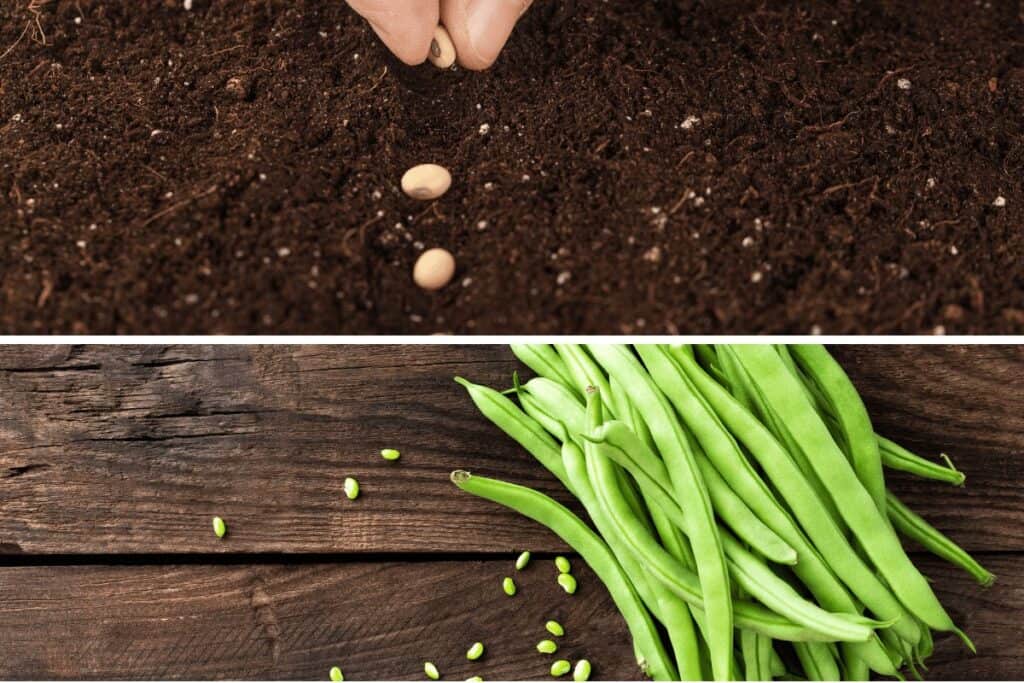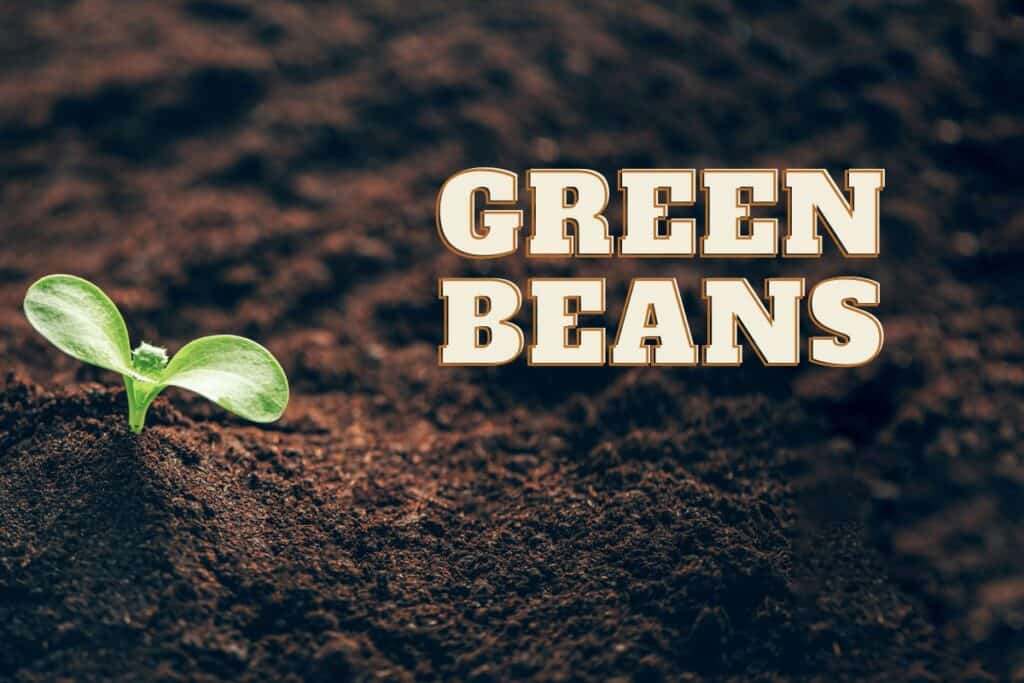In this article, we will provide a comprehensive guide on Planting, Growing, and Harvesting Green Beans successfully. We will also provide helpful tips and tricks to ensure that your green bean harvest is bountiful and delicious.
Choosing the Right Variety of Green Beans
There are two main types of green beans: bush beans and pole beans. Bush beans are shorter and do not require any support, making them an excellent choice for small gardens or containers. On the other hand, pole beans are taller and require trellises or other supports to grow properly.
Within these two categories, there are many different varieties of green beans to choose from. Some of the most popular varieties include Blue Lake, Kentucky Wonder, and Roma II.
When selecting your green bean variety, consider factors such as taste, texture, and disease resistance.

Preparing Your Garden Bed or Container
Green beans are relatively easy to grow and do not require a lot of fertilizer. In fact, green beans are legumes and can fix their nitrogen from the air, so they do not require additional nitrogen fertilization.
To prepare your garden bed or container for green beans, start by clearing away any weeds or debris. If planting in a garden bed, work in some compost or other organic matter to improve soil fertility.
For container gardening, use a high-quality potting mix that is well-draining.
Planting Green Beans
When planting green beans, it’s essential to pay attention to the spacing and depth of the seeds. Plant bush beans about 1-2 inches apart and pole beans about 3-4 inches apart. Sow the seeds about 1 inch deep in the soil.
After planting, cover the seeds with soil, water them well, and keep the soil moist until the seeds germinate.
Caring for Your Green Beans
Once your green beans have germinated and begun to grow, there are a few things you can do to ensure a successful harvest.
First, keep your green beans weeded and mulched to prevent competition from other plants and to retain soil moisture. Additionally, green beans need regular watering, especially during dry spells.
Harvesting Green Beans
The time of harvest for green beans varies depending on the variety and growing conditions. Bush beans are typically ready to harvest 50-55 days after planting, while pole beans may take 55-65 days or more, depending on the variety.
When harvesting green beans, it’s essential to snap off the tip of each bean and remove the string from the front side of the bean.
Then, snap each bean into 2 or 3 separate pieces and drop them into a pot of water to rinse off any dirt or debris.
What Is the History of Green Beans?
Green beans, also known as string beans or French beans, are widely cultivated vegetables that are eaten worldwide. According to [1], the green beans that were cultivated prior to the 17th century were rather tough and stringy, often grown more as an ornamental plant than as a food crop.
However, people began to experiment with cross-breeding in search of a more palatable variety. The green bean that we know and love today is a result of these experiments.
Green beans are the young, unripe fruits of various cultivars of the common bean (Phaseolus vulgaris) and are known by many common names, including French beans, string beans, and snap beans.
According to [2], green beans are not limited to just the common bean and can also come from immature or young pods of the runner bean, yardlong bean, and hyacinth bean.
Furthermore, green beans are a popular edible-podded legume of the species Phaseolus vulgaris, which is widely cultivated. According to [3], green beans are known for being a source of dietary fiber, vitamins, and minerals. They can be eaten fresh or cooked in a variety of ways, including steamed, sautéed, or baked.

Here Are 3 Popular Green Bean Recipes
- Green Bean Casserole: This classic dish is made with green beans, cream of mushroom soup, milk, and soy sauce, and topped with crispy fried onions. It’s a perfect side dish for holiday meals or any occasion. You can find a recipe for it on the Food Network website [1].
- Garlic Parmesan Green Beans: This recipe is a simple and flavorful way to enjoy green beans. The beans are sautéed with garlic and seasoned with parmesan cheese and breadcrumbs. You can find a recipe for it on The Pioneer Woman website [2].
- Lemon Garlic Green Beans: This recipe is a quick and easy way to make delicious green beans. The beans are sautéed with garlic and lemon juice, then seasoned with salt and pepper. You can find a recipe for it on the Taste of Home website [3].
I hope you find these recipes helpful!
FAQS
What are green beans, and what are the different types of green beans?
Green beans are a type of vegetable that is often used in cooking. There are several types of green beans, including bush beans and pole beans. Bush beans are ready to harvest all at once, whereas pole beans can be harvested throughout the season. [1]
How do I grow green beans, and what do I need to know before planting them?
To grow green beans, you will need to prepare a garden bed, row, or container, and direct sow the bean seeds into the soil at a spacing of about 1-2 inches apart. You should also thin the plants to a spacing of 3-4 inches after they have come up, and keep them weeded. [2]
How do I harvest green beans, and when are they ready to be picked?
The time of harvest for green beans varies on the varietal level. In general, bush beans are ready to harvest 50-55 days after planting, while pole beans are often ready after 55-65 days or more, depending on the variety planted. Bush beans are ready to harvest all at once, whereas pole beans can be harvested throughout the season. [1]
How do I prepare green beans for cooking?
To prepare green beans for cooking, you should first snap the tip off of each green bean and remove the long string from the front side of the bean. Then, snap each bean into 2 or 3 separate pieces and drop them into a pot of water to rinse the dirt off of them. [3]
Are green beans a healthy vegetable to include in my diet?
Yes, green beans are a nutritious vegetable that can be a great addition to a healthy diet. They are low in calories and fat, but high in fiber, vitamins, and minerals. Green beans are particularly rich in vitamin K, vitamin C, and folate, and they may also have anti-inflammatory properties. [1]
Conclusion
Growing green beans is an excellent way to enjoy fresh, healthy produce straight from your garden or container. By choosing the right variety of green beans, preparing your garden bed or container correctly, and caring for your green beans throughout the growing season, you can enjoy a bountiful harvest of delicious, nutritious green beans.
Thank you for reading this comprehensive guide on planting, growing, and harvesting green beans. If you have any questions or feedback, please feel free to leave a comment below.
Latest Posts
- What Types of Lettuces Can You Grow?

- How to Plant Onion Seeds for Maximum Germination

- How to Plant Parsnip Seeds for Maximum Germination

- How to Plant Mushroom Seeds for Maximum Germination

- How to Plant Lettuce Seeds for Maximum Germination

- How to Plant Kale Seeds: A Step-by-Step Guide to Maximum Germination Success!





